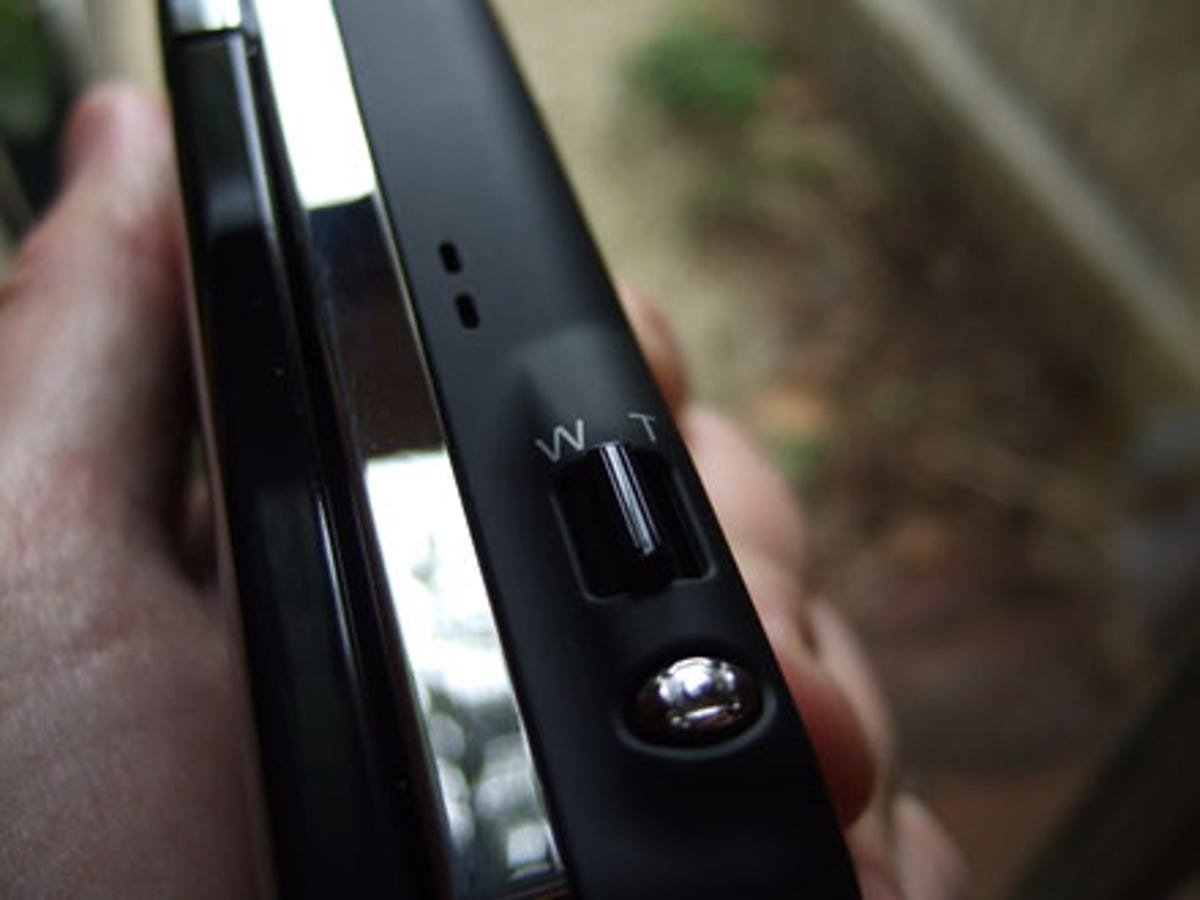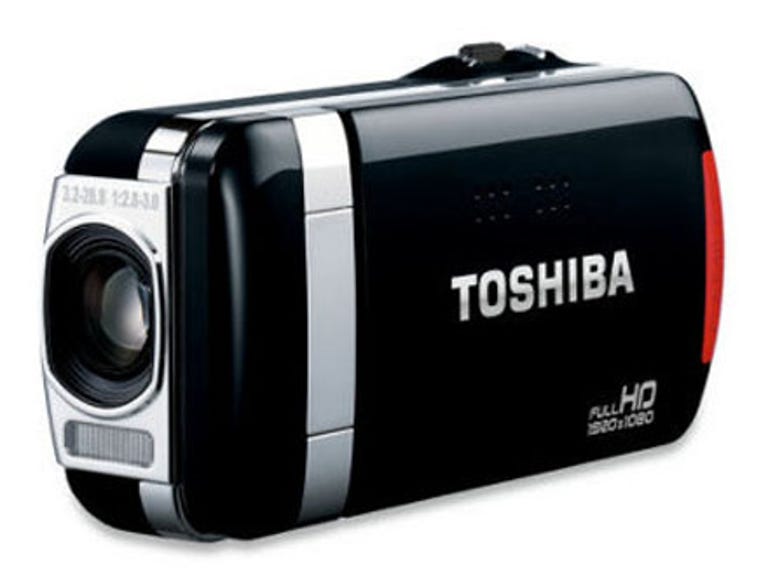 Why You Can Trust CNET
Why You Can Trust CNET Toshiba Camileo SX900 review: Toshiba Camileo SX900
Occupying a unique position somewhere between a pocket camcorder and a costlier video device, the Toshiba Camileo SX900 is fun to use, great value and offers several features not usually found on devices of this price.
If you want to film your own videos at a higher quality than the average camera phone, but find most mainstream camcorders are too complex, expensive and unwieldy for you, the Toshiba Camileo SX900 could be one to consider. In many ways, it follows the same principle as devices like the Flip Video, shrinking down physical proportions, while making HD video-recording as accessible and affordable as possible. The SX900 sticks with a more traditional shape, however, and packs in many more features than the average pocket camcorder for roughly the same price (£250).
The Good
The Bad
The Bottom Line
Clarity of vision
Shiny black with metallic trim is a good look for this small-form camcorder. The slimline SX900 slips easily into a pocket and can be ready to go in the time it takes to flip open the LCD screen. Its diminutive body is lightweight and comfortable to hold, yet offers an instantly familiar palm-held style of operation. There are no fussy touchscreen controls, no complex settings to learn and barely any buttons to contend with at all. For most people, all that's required is the selection of a quality setting and you're free to get on with the fun part.
At top whack, the SX900 offers 1080p high-definition video at 30 frames per second. Also on tap is 1080i at 60fps, as well as 720p and 480p settings. We tested them all and came to the conclusion that it's a pretty close contest. If anything, the 1080i setting probably offers marginally better results than 1080p -- rolling shutter skewing issues were less obvious and the faster frame rate provided better-looking motion in outdoor conditions. Across the board, we found colours were a little weak compared to some other camcorders we've had the pleasure of testing recently. Indoors, the otherwise sharp image quickly becomes mushy as the single CMOS sensor struggles to soak up light, but this is quite common. We noticed a few rogue artefacts cropping up in our test footage, the most likely culprit being the compression technique employed by the Camileo's non-AVCHD MP4 recording standard.

These issues aside, we were quite impressed with what the SX900 had to offer in terms of its picture-quality-to-price ratio, particularly when using the camcorder in good, even light. The only real gripe we have with using the device is that its zoom rocker is too small and stiff, making it impossible to zoom in or out without wobbling the image.
Photo finish
Photo quality is slightly above average for a device of this type and price. You can take still shots while filming, but these are in widescreen format and low quality. Better results can be had by clicking the photo button when you're not shooting video. At its top setting, the SX900 will give you higher resolution snaps in a more traditional photo aspect ratio (4:3). Curiously, while the SX900's specifications boast a 14-megapixel CMOS sensor, the maximum photo size is 3264x2448 pixels, which equates to 8 megapixels. The purpose of the sensor's additional 6 megapixels is beyond us. We did pose the question to Toshiba, but no one from the company was able to reply.
Naturally, external daytime photos tend to come out much better than those taken indoors in weak lighting conditions. Something else that might annoy still photographers is that when you're lining up your shot, what you see on screen isn't what you get. The LCD's default is to display in 16:9. Press the shutter button halfway down, and you'll see the actual framing for a 4:3 photo is completely different. Unfortunately, there doesn't seem to be any effective way of locking the screen's preview to the correct aspect ratio in order to set up your shot before taking it.
Feature comforts
Unlike many pocket camcorders, the SX900 comes with some impressively high-end features. You will find a decent 9x optical zoom, for example, along with HDMI output and access to a surprising number of manual controls via the settings menus. The electronic image stabiliser is only a couple of notches above useless, but face detection, an LED light and audio-only recording are all welcome extras. There's no on-board storage (you'll need to supply your own SD/SDHC/SDXC card), but the Camileo's box is otherwise well-stocked with accessories, including -- shock horror -- an HDMI cable, which is something most manufacturers are still stubbornly refusing to include with UK models, despite HDMI becoming the standard connection for high-definition devices.
Conclusion
You're never going to get broadcast-quality results from the Toshiba Camileo SX900 but, for normal day-to-day use, it's a great little device that goes the extra mile to accommodate both point-and-shoot types and those who want more to explore.
Edited by Emma Bayly


